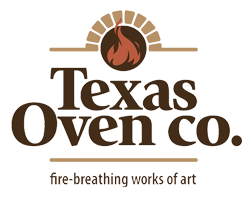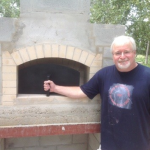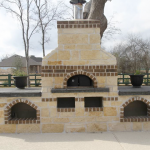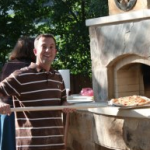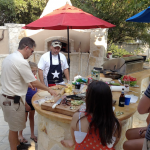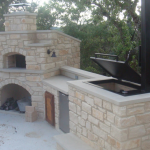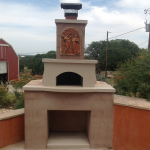Keeping a Wood-burning Oven Cured
How important is it to cure your oven?
Actually, it is very important to properly cure a new wood-fired oven. A new oven that has been allowed to set and cure (dried of imbedded moisture) will sustain high internal temperatures without excessive cracking. The construction materials of an established oven that has not been fired up for a significant period of time can absorb moisture, too. Occasionally it’s a good idea to light a small curing fire in an oven that has not been used regularly.
An assembled oven that has not been cured before firing it up to high temperatures is subject to serious cracking. High heat pressurizes any moisture that remains in the stone, mortar, concrete and stucco. So the key to properly curing an oven is going slow– slowly drying out the moisture imbedded in the oven without creating explosive steam (horror stories on YouTube).
Experts agree that an oven’s initial curing will take several days of controlled temperature fires—some say three days, burning 6 hours a day, no higher than 212°. Others recommend a 6-day curing with the oven temperature increasing 50 degrees every day, beginning at 300° and moving to 500°.
Dave, at Texas Oven, describes his 3-4 day curing process using a propane torch. “Set the torch to medium low, about a 6” flame, put it in the middle of the oven, and burn up a whole 20# tank of propane. Usually it’s fine to leave it burning overnight. The next day, refill the tank and add 2-3 pieces of wood if you like, or just increase the flame. You want to gradually raise the temperature to push the moisture out. Slow even heat is the key. Wood works fine, but the propane is easier to control. Over three days, increase the heat from 300° to 500°. By the fourth day, the oven should be ready to take it all the way up.”
How do you know if the oven is ready to be taken “all the way up”? If you’ve followed the proper curing process, the oven should be ready by day four to take it up to what he calls “the clean white dome.” Dave has noticed that owners find it easier to heat up an oven too high, too soon and he advises taking it easy in slowly curing a new oven or drying out an established oven that has taken on moisture.
What if there are cracks in the stucco covering the exterior of the oven? Small cracks are the result of normal thermal expansion and will not affect the functionality of a wood-fired oven. As Dave says “all ovens eventually develop minor cracks that are cosmetic.” After one or two years when you are experienced in firing and cooking, Dave can give the oven a check-up for cracks and apply an acrylic finish, a mini-facelift for an oven that has settled in.
